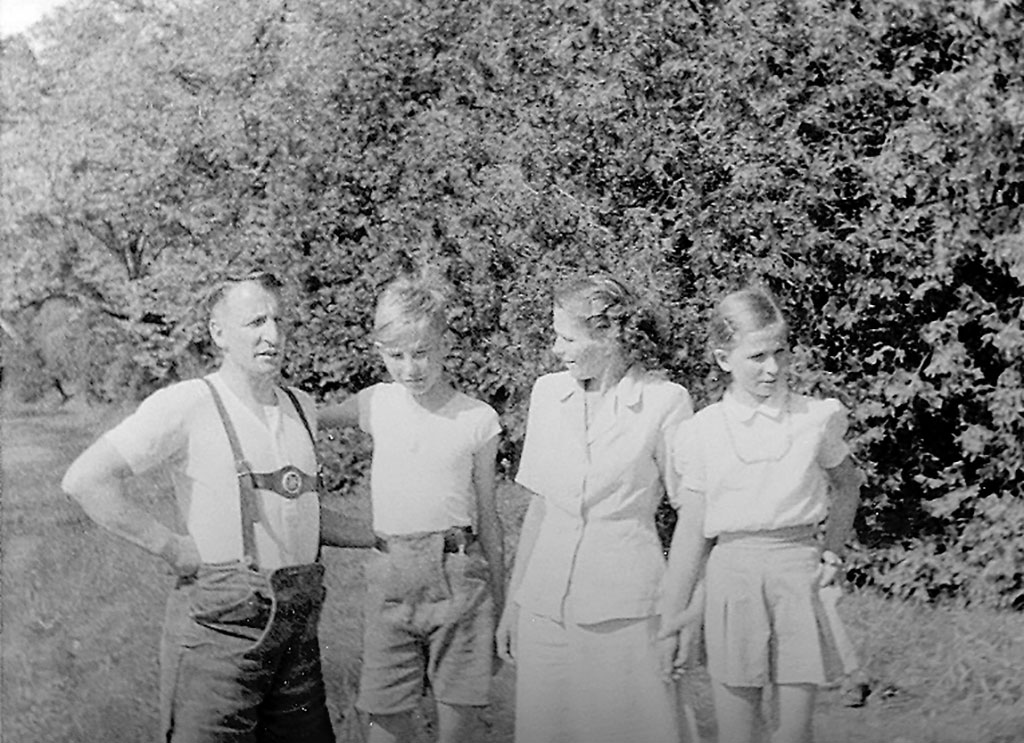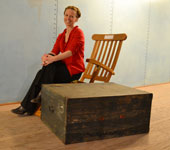Christine Schlechta was a 10-year-old German immigrant at the time of what she recalled as a magical quarantine Christmas.
“It was Christmas Eve, 1951, when we arrived in Halifax at Pier 21,” Christine remembered. “We were led into the large assembly hall lined with benches where we had to wait until our names were called. Then we were processed and our documents were stamped with the designation of landed immigrant.
“Unfortunately, or rather fortunately as it turned out, Hans had gotten sick just a few hours before our arrival. This meant that he had to be quarantined, and because he had become sick on board ship, the shipping company had to pay all the cost. It also meant that we had a place to stay over Christmas. I don’t know what we would have done otherwise. Hans was taken to a hospital room and the rest of us were shown to a room containing several metal bunk beds. We had the room to ourselves and it became our home for several days.”
One person’s prison is another’s home for the holidays and for Christine and her brother Hans the best was yet to come.
“During the night the rain turned to snow and we awoke to a winter wonderland,” she recalled.
“Huge amounts of snow had fallen and many of the Italian immigrants got their first job in Canada when they took shovels and cleared the snow off the tracks so that the trains could run.
“It was Christmas morning in a strange, cold land.
“We were well fed during our stay in Halifax, and especially on Christmas Day. For breakfast I received a bowl full of some strange stuff called corn flakes. We also had very hard-boiled eggs. And we were given cups of strong tea with milk and sugar, also strange. In Germany tea is served with lemon, never with milk.
“From the staff at the hostel I received a colouring book and wax crayons. I had never seen wax crayons before, as I was used to pencil crayons. I found it was difficult to colour with them and stay inside the lines; but the colouring book kept me occupied for many days. That evening we had our first-ever turkey dinner with stuffing, mashed potatoes, cranberry sauce and gravy.”
It’s not just me right, when healthy people are quarantined they become obsessed with food. Just reading this makes me want to take a break and consume an entire chicken but I won’t, well, not until Christine finishes her story.
In time Christine and her healthy siblings were allowed to go out and explore Halifax.
“One memorable thing that fascinated me were the lights on the marquee of a movie theatre that blinked and moved along non-stop. I had never seen moving lights before.”
That would have been the Orpheus Theatre on Barrington Street. I was never there but it features prominently in many immigrant and veteran’s stories so I feel a sense of nostalgia for it. The independent theatres are almost all gone and it is hard to imagine when we will all crowd back into the chain theatres, if ever. The loss of that communal experience will be profound but, like Christine, we need to stay positive and find our joy in every morsel of food and twinkling light.
Update: When I contacted Christine to share this blog she was struck by the irony of the timing.
“…your blog arrived just as my husband and I are halfway through a 14 day self quarantine because of COVID-19,” she wrote.
“We were on the cruise ship Zaandam, sailing around South America, a 2 week cruise that turned into a 4 week nightmare because no country allowed us to dock. We finally landed in Ft. Lauderdale April 3, after the governments of many countries, including Canada and the US pleaded with the governor of Florida to allow us to disembark and fly home.”
Christine and her husband are now out of quarantine and doing great.
Canadian Museum of Immigration at Pier 21 (S2012.2316.1)

Canadian Museum of Immigration at Pier 21 (DI2014.393.10)
